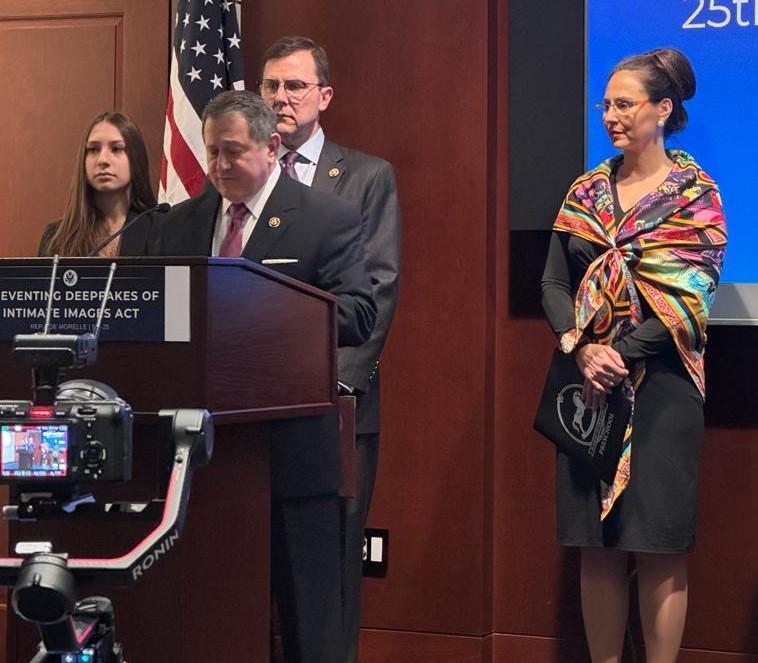A subcommittee of the Senate Committee on Banking, Housing, and Urban Affairs held a hearing on the afternoon of May 2 to discuss, hear testimony, and ask questions related to a bill introduced by subcommittee chair Sen. Tina Smith (D-Minn.) and Sen. Mike Rounds (R-S.D.) to combat a crisis in lack of affordable housing in rural areas in America for the low-income, elderly, and those with disabilities.
In her opening remarks, Sen. Smith (D-Minn.) described how the Rural Housing Service Reform Act would change USDA law and meet the dire need for more affordable housing and rental subsidies.
“We have a serious shortage of housing in this country, especially in rural communities—and those challenges are across the housing continuum, from the most affordable properties to market-rate workforce housing,” said Smith. “Housing challenges can be about families trying to find a place to live or people with disabilities or seniors that can’t find a place to live on a fixed income.
“Often, it is about people who want to take a job at a grain elevator or a meat processor or a manufacturing facility, but the closest home they can afford is miles and miles away.”
Affordable housing advocates and development organizations appeared at the Subcommittee on Housing, Transportation, and Community Development hearing.
Key Provisions of Rural Housing Service Reform Act
The Rural Housing Service Reform Act would revise U.S. Department of Agriculture (USDA) rural affordable housing programs, among them the 514, 515, and 521 programs which the senators and witnesses focused on in the hearing.Through the 514 and 515 programs, developers receive low-interest mortgages to finance the building of affordable rural housing. The 521 program provides a subsidy to pay for rent at 514 or 515 properties, with the subsidy equal to the difference of 30 percent of the renter’s income and the total rent.
Under present law, when developers of 514 and 515 housing pay off a mortgage on a unit or building, those renting a residence and using 521 assistance lose that 521 subsidy.
The Rural Housing Service Reform Act would “decouple” the programs, allowing owners to stay in the program after they pay off their 514 or 515 mortgage. Renters who chose to stay at the property would continue receiving their housing subsidy.
Under the changes, owners would profit by maintaining a steady flow of rental income and being able to qualify for investments and financing from banks, community development institutions (CDFIs), and other groups.
Renters would benefit from the change by not having to move and look for a new residence and be able to continue living at an affordable price.

Smith, who talked about the benefits of the decoupling of the rental assistance programs, noted that the bill she co-sponsored would make it easier for nonprofits to acquire properties that had their USDA mortgage paid off and continue offering affordable housing in those properties.
Subcommittee member Jon Tester (R-Mont.) represents a state that, according to World Population Review, with 44.1 percent of its population living in a rural area, trails in this category only Maine (61.3 percent), Vermont (61.1 percent), West Virginia (51.3 percent), and Mississippi (50.7 percent).
“Look, I think you all know we’ve got too many people that can’t find a house, can’t afford a house, or living in cars or living with relatives,” Tester said at the hearing. “It’s not good, and I think it’s a serious, serious problem in Montana. And I can’t speak for the other states, but I got a notion we’re not alone.”

Tester then asked one of the witnesses, David Lipsetz, president and CEO of the Housing Assistance Council, a national nonprofit that supports affordable housing, “How would decoupling these 515 loans benefit the communities in a rural state like Montana or anywhere else for that matter.”
Lipsetz responded: “Every single property that all of us live in in this country, except for a small number, have private finance or public finance as a mortgage. You borrow money so that you can move in today. You make your payments to get back and you capitalize.
“You bring that money into your building so that you can keep the roof up, the windows up, fix the door frame when it’s needed.”
Lipsetz added: “If you’re able to take the USDA mortgage after it’s prepaid, set it aside, and do all of the things that we’re talking about, about protecting the affordability of the unit, then you’re gonna have 521 rental assistance that can go out and help that owner leverage that finance. There’s no better tool.”





